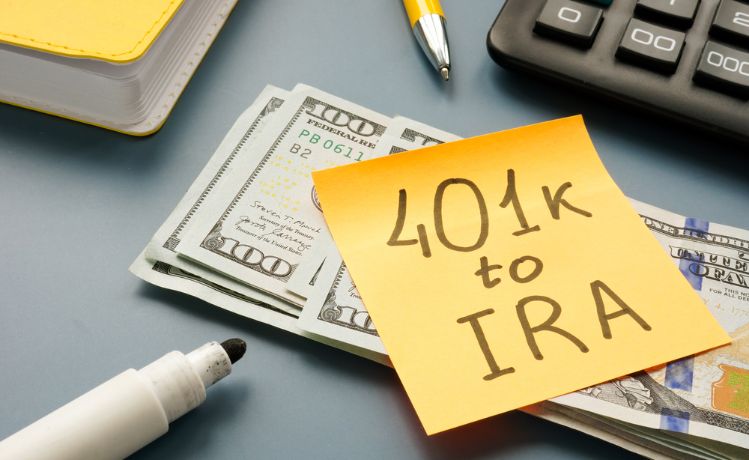Although unemployment rates have fallen dramatically, layoff numbers are still quite high. Thankfully, it seems that people are quickly getting back on their feet with a new job. There is some good news for those with 401(k) plans who have lost their job. You now have access to those funds and can move them to a retirement plan that me be better suited for you. These are known as 401(k) rollovers.
Before deciding to perform a rollover, you should be aware of one important thing. What are the tax consequences of rolling over old 401(k) funds to a new retirement plan?
- To perform 401(k) rollovers, first, you must satisfy a plan triggering event
- 401(k) funds can be rolled over to another retirement plan once this happens
- Depending on how you roll the funds over, there may be tax consequences you should be aware of
401(k) Plan Triggering Event Requirement
In general, in order for a 401(k) plan participant to transfer his or her 401(k) funds to an IRA or another retirement plan, a plan triggering event would need to be satisfied. It is hard for many 401(k) plan participants to believe that they do not have control over their current employer plan funds. The following are the most common triggering events:
- Reach the age of 59 1/2
- Separate from your job
- Plan is terminated
- Rolled funds into 401(k) plan
- Hardship distribution
In sum, if a 401(k) plan participant is under the age of 59 1/2 and continues to be employed by the employer that sponsored the 401(k) plan, the individual will likely not be able to perform a rollover. If you were laid off, you have satisfied a triggering event.
401(k) Plan Rollovers to a Traditional IRA
If a plan participant satisfies a plan triggering event, the individual will have the ability to rollover funds to an IRA without tax. A direct rollover means the funds are transferred directly from the 401(k) plan to an IRA. A direct rollover can be done in cash or in-kind, by rolling over the asset directly, such as stock or real estate.
A direct rollover to an IRA is not subject to any withholding tax. However, once every twelve months, a 401(k) plan participant that can satisfy a plan triggering event, may engage in an indirect rollover.
Unlike a direct rollover, with an indirect rollover, the funds are transferred from the 401(k) plan to the retirement account owner, who will have sixty days to use the funds for any purpose without tax or penalty. The funds must then be rolled into an IRA or another retirement plan before that time period is up. If the retirement account holder misses the deadline, the entire amount of the indirect rollover will be deemed subject to tax, and a 10% penalty if the individual is under the age of 59 1/2.
One thing to consider, in the case of an indirect rollover, a 20% withholding tax would apply even if you intended to roll it over later to another retirement plan. If you do roll it over and want to defer tax on the entire taxable portion, you’ll have to add funds from other sources equal to the amount withheld. Note – the 20% withholding tax does not apply to direct rollovers.
Related: How to Transfer my IRA to IRA Financial
401(k) Plan Rollovers to a Roth IRA
A 401(k) plan participant that has satisfied a triggering event can rollover funds to a Roth IRA. There are two scenarios in which this can occur.
First, a 401(k) plan participant that has pretax funds can elect to roll the funds to a traditional IRA, and then convert the Traditional IRA to a Roth. A conversion is subject to income tax on the fair market value of the assets converted.
Secondly, a plan participant who has Roth 401(k) funds can rollover those funds tax-free to a Roth IRA. The rollover can be direct or indirect. However, an indirect Roth IRA rollover can only be done once every 12 months and is subject to the aforementioned sixty-day rule.
Conclusion
The most common way to move funds from a 401(k) plan to an IRA or Roth IRA is via a direct rollover. Almost $500 billion each year is rolled over from 401(k) plans to IRAs. Those with pretax 401(k) funds that want to do a direct rollover to a Roth IRA, you must first technically roll those funds to a traditional IRA and then convert to a Roth. Most companies, such as IRA Financial, will only charge for the Roth IRA, in the case of a conversion scenario.
There are two instances where you should be aware of tax consequences. The Roth conversion, and the indirect rollover route. You should plan accordingly before moving your funds from one plan to another.
If you have been laid off, or have left your job for some other reason, and you have 401(k) plan funds, you can now access them, and move them to a more desirable account. Alternatively, if you are already at a new job, you can transfer those funds to the new company’s plan, if they have one. A transfer is simply a rollover between like accounts, in this case, 401(k) to 401(k).










